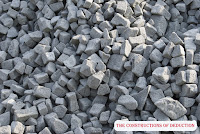Enumerate the Objects of signalling in Railway.

The following objects of signalling are given by:- 1. It provide the facilities for the efficient movement of trains. 2. To ensure safety between two or more trains which cross or approach each others path. 3. To provide facilities for safe and efficient shunting operations. 4. To provide facility for the maximum utility of the track. 5. To guide the trains movement during maintenance and the repairs of the track. 6. To safeguard the trains at converging junctions and give directional indications at diverging junctions.






